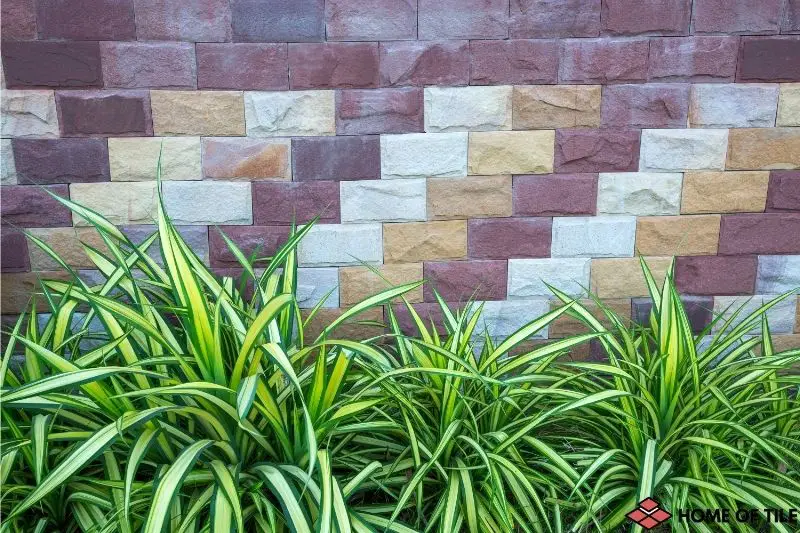Wall Outdoor Tiles. 11 Things you should know
A wall garden is a great way to add some life and color to a room or outdoor space. They can be as simple as a few plants in a container or as elaborate as a full garden wall. Wall garden tiles are a great way to add a garden to a wall without a lot of work. They are easy to install and can be customized to fit any space.
Contents
Wall Outdoor Tiles
Do you have a green thumb but no outdoor space to garden? Are you tired of having to weed your garden every week? With wall outdoor tiles, you can have the best of both worlds!
Wall outdoor tiles are a type of garden that can be installed on a wall or fence. They come in various shapes and sizes and can be used to create a beautiful garden that is easy to maintain.
Wall outdoor tiles are also a great way to add color and life to a dull wall or fence. They can be used to create a beautiful garden oasis that is perfect for relaxing or entertaining.
If you are looking for a unique and easy way to add a garden to your home, wall outdoor tiles are the perfect solution!

● How To Create A Living Wall
Vertical gardens are all the rage these days, and for a good reason. They are a great way to add some life and color to a space while also providing privacy. If you’re thinking of adding a living wall to your home, there are a few things you need to know first.
The first thing you need to do is choose the right wall. Not every wall is suitable for a living wall. The wall should be relatively flat and should have good drainage. If you’re not sure whether or not your wall is suitable, ask a professional.
Once you’ve chosen the right wall, it’s time to start planning your garden. You’ll need to decide what plants you want to use and how you want to arrange them. You’ll also need to decide on a soil mix and whether or not you want to add any irrigation.
If you’re not sure how to get started, there are many online resources that can help. Several companies specialize in creating living walls.
Once you’ve created your garden, it’s important to take care of it properly. You’ll need to water it regularly and ensure that it gets enough sunlight. If you’re not sure how to take care of your garden, ask a professional for advice.
● Types Of Wall Gardens
A wall garden is a garden that is grown on or against a wall. There are many different types of wall gardens, and each has its own unique benefits and drawbacks.
– Living wall
One type of wall garden is a living wall. A living wall is a garden grown on a vertical surface, such as a wall or a fence. Living walls are often used to create green walls, which are walls covered in plants. Green walls can improve air quality, reduce noise pollution, and provide insulation.
– Container garden
Another type of wall garden is a container garden. Container gardens are grown in containers, such as pots or boxes. Container gardens are a great way to grow plants in small spaces, and they can be moved around easily.
– Hanging garden
The third type of wall garden is a hanging garden. Hanging gardens are gardens that are grown in hanging baskets or planters. Hanging gardens are a great way to grow plants in small spaces, and they are per fertilized. Hanging gardens are great for indoor gardens, but they can be difficult to maintain.
– Which type of wall garden is right for you?
That depends on your needs and your budget. If you are looking for a way to improve air quality, reduce noise pollution, and provide insulation, then a living wall is the best option.
- Small space: If you are looking for a way to grow plants in a small space, then a container garden is the best option.
- Indoor space: If you are looking for a way to grow plants in an indoor space, then a hanging garden is the best option.
Each type of wall garden has its own unique benefits and drawbacks. Living walls are great for improving air quality, reducing noise pollution, and providing insulation, but they can be expensive to install. Container gardens are a great way to grow plants in small spaces, but they can be more difficult to water.
● Benefits Of Wall Gardens
As the world becomes increasingly populated, land for farming and gardening becomes scarce. That’s why more and more people are turning to wall gardens to grow their fruits and vegetables. Wall gardens are a great way to save space and still get the benefits of gardening.
There are many benefits to growing a wall garden. First and foremost, wall gardens are space-saving, and they can be installed on any wall, big or small, indoors or out. They are also a great way to garden in an urban environment, where land is at a premium.
Wall gardens are also a great way to garden year-round. You can grow various fruits and vegetables in a wall garden, regardless of the season. And because they are installed on a wall, they are protected from pests and animals.
Wall gardens are also a great way to add greenery to your home. They can brighten up a room and make it feel more spacious. And because they are installed on a wall, they don’t take up any floor space.
If you’re thinking about installing a wall garden, keep a few things in mind. First, make sure that the wall you choose is strong enough to support the weight of the garden. Also, make sure that the wall is in a sunny spot so that the plants can get plenty of sunlight.
Wall gardens are a great way to garden in a small space, and they are easy to install and can be used to grow various fruits and vegetables. Wall gardens are also a great way to add greenery to your home.
● Wall Outdoor Tiles
There are several types of wall outdoor tiles or wall tile planters. Wall tile planters are tiles with a basket that will contain some soil and the plant. By adding these special tiles at regular intervals on your wall, you can create a beautiful wall garden.
The choice for wall tile planters is generally limited as they are manufactured in small quantities by only a few manufacturers. But they still come if different shapes and sizes.
If you can not find a suitable wall tile planter for your wall, you could also mount rectangular or square stone plant pots to your wall. Ensure that they are properly mounted, as they should bear the weight of the soil, water, and plants. And some plants feel light when you add them but will grow bigger and heavier over time.
If you prefer low maintenance, add an automatic watering system. Depending on the location and local weather, it is possible that you need to water them regularly. If you only have a few plants, that will be fine, but this can be time-consuming when the wall garden is larger.
What Is The Best Tile For Outdoor Wall?
Outdoor walls can be made from various materials, but tile is a perfect material for it. Tile is durable, weather-resistant, and comes in various colors and styles. So what is the best tile for outdoor walls?
There are a few factors to consider when choosing tile for an outdoor wall. The most important factor is the climate. Tile that is suitable for outdoor use will be weather-resistant and durable. It is also important to choose a tile to complement the surrounding landscape.
If you live in a climate with severe weather conditions, choosing a durable and weather-resistant tile is important. Suitable outdoor tiles typically have a higher price tag, but they will be worth the investment.
If you live in a climate with mild weather conditions, you have a wider range of options when choosing a tile for your outdoor wall. Indoor tiles often can also be used outdoors, but they may not be as durable.
When choosing a tile for your outdoor wall, consider the climate, the style of your home, and the surrounding landscape.
Can You Tile Outdoor Walls?
Tiling outdoor walls is an excellent option. Outdoor tiles are specifically designed to withstand the elements and can be used indoors and outdoors. They are durable, water-resistant, and easy to clean. There are many different styles and colors to choose from, so you can create a perfect look for your home.
- Choose a suited tile: If you’re thinking about tiling your outdoor walls, choose a tile suited for outdoor use. This will ensure that it’s durable and weather-resistant.
- Grout: When installing outdoor tiles, use grout for outdoor use. This will help keep the tiles in place and protect them from the elements.
- Ask for help if needed: If you’re not sure how to install outdoor tiles, be sure to consult a professional. They will be able to help you with the installation and ensure that the tiles are installed correctly and safely.
● How To Tile Outdoor Walls
Outdoor walls can be a great way to add extra living space to your home, and they can also be a great way to improve your home’s curb appeal. If you are thinking about adding an outdoor tile wall to your home, there are a few things that you need to keep in mind.
1. Choose the type of tile
The first thing you need to do is decide what type of tile you want to use. There are various types of tile that you can use for outdoor walls, including ceramic, porcelain, and stone. You will also need to decide on the color and style of the tile.
2. Choose the tile layout
Once you have decided on the type of tile you want to use, you will need to decide on the layout of the tiles. You will need to decide how big of a space you want to cover and how many tiles you will need to cover that space. You will also need to decide on the pattern of the tiles.
3. Choose the mortar
Once you have decided on the layout and the pattern of the tiles, you will need to decide on the type of mortar you want to use. You can use various mortars for outdoor walls, including cement, sand, and acrylic.
4. Choose the grout
Once you have decided on the type of mortar that you want to use, you will need to decide on the type of grout that you want to use. There are a variety of different grout colors that you can use for outdoor walls, including cement, sand, and acrylic. Ensure that the grout you choose is suited for outdoor use.
5. Prepare the wall surface
Once you have decided on the type of mortar and grout you want to use, you will need to prepare the wall’s surface. The wall’s surface should be clean and free of any dirt or debris. You will also need to make sure that the wall is level.
6. Apply the mortar and tiles
Once the wall’s surface is prepared, you will need to apply the mortar to the wall. You will need to apply the mortar in a thin layer and make sure it is evenly spread. You will then need to apply the tiles to the mortar, and make sure that the tiles are pressed firmly into the mortar.
7. Apply the grout
Once the tiles are in place, you will need to allow the mortar to dry. Once the mortar is dry, you will need to apply the grout to the tiles. Ensure that the grout is evenly spread and that there are no gaps between the tiles.
8. Seal the tiles
Once the grout is dry, you will need to seal the tiles. Sealing the tiles will help to protect them from weathering and fading.
Which Tiles Are Good For Garden?
Many different types of tiles can be used for a garden. Paving tiles are a popular choice as they are durable and easy to clean. They come in different colors and styles, so you can find the perfect option to suit your garden.
Alternatively, you could use decking tiles to create a decked area in your garden. These are made from wood and are easy to install, making them a great option if you want to add a new seating area to your garden.
If you want a more natural look, you could use stone tiles. These are made from natural materials and can be used to create paths, patios, or steps. They are durable and long-lasting and will add a touch of elegance to your garden.
No matter what type of tiles you choose, make sure you select a quality product that will withstand the elements. Tiles that are designed for outdoor use will be resistant to fading, cracking, and staining, so you can enjoy your garden for years to come.
● Tile Types For Gardens
There are many types of tile for gardens, and the best type for your garden will depend on your individual needs and preferences. Some of the most popular types of outdoor tiles include:
- Concrete Tiles: Concrete tiles are a popular choice for gardens as they are durable and long-lasting. They are also easy to clean and maintain.
- Clay Tiles: Clay tiles are another popular choice for gardens, as they are both beautiful and durable. They are also resistant to fading and staining.
- Stone Tiles: Stone tiles are an attractive and natural option.
- Glass Tiles: Glass tiles are a nice option, depending on the garden design. They are durable and long-lasting, making them a great choice for outdoor use.
- Metal Tiles: Metal tiles are a less seen option. They are resistant to fading and staining, making them great for outdoor use.
● Benefits Of Outdoor Tiles
If you are looking for a way to improve your garden, you may want to consider garden tiles. There are many benefits of using tiles in your garden, including the following:
- Drainage: Outdoor tiles can improve drainage in your garden. If your garden is prone to flooding, installing a drainage system made of tiles can help to alleviate the problem.
- Neat and Tidy: Outdoor tiles can help to keep your garden looking neat and tidy. If you have a lot of weeds or debris in your garden, installing a tile surface can help to keep it under control.
- Designs: Outdoor tiles can create various designs in your garden. If you want to add some extra flair to your garden, consider using tiles in various colors and shapes.
- Walking or sitting area: Outdoor tiles can create a walking or sitting area in your garden. If you are looking for a place to relax or have a picnic, garden tiles can be the perfect solution.
- Path: Outdoor tiles can be used to create a path through your garden. This can be a great way to keep your feet clean and dry while walking through your garden.
- Protect plants: Outdoor tiles can add extra protection to your plants. If you have plants located in a high traffic area, installing a tile surface can help protect them from being trampled.
- Color: Outdoor tiles can be used to add extra color and life to your garden. If you are looking for a way to brighten up your garden, consider using colorful tiles in various shapes and sizes.
- Cleaning: Outdoor tiles are easy to clean and maintain. If you are looking for a low-maintenance solution for your garden, outdoor tiles may be the perfect option.
● How To Install Outdoor Tiles
Installing outdoor tiles is a great way to add pizzazz to your outdoor space. Whether you are looking to create a new patio area or simply want to add a little something extra to an existing one, outdoor tiles can be a fun and affordable way to do it. Here are a few tips on how to install them:
- Decide on a layout: This can be as simple or as complex as possible. Just remember to consider the size of the tiles and the shape of your space.
- Prep the surface: If installing on a new surface, ensure it is level and smooth. If you install over an existing surface, remove any debris or weeds and make sure the surface is level.
- Spread a layer of adhesive: Follow the instructions on the adhesive to make sure you are using the right amount.
- Place the tiles: Please make sure they are in the correct position and press them firmly into the adhesive.
- Let the adhesive dry: Follow the instructions on the adhesive to see how long you need to wait before walking on the tiles.







